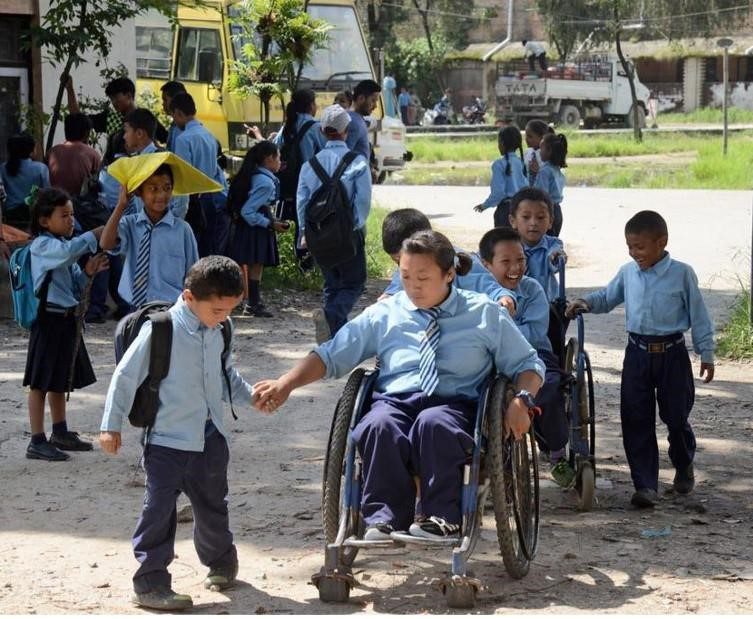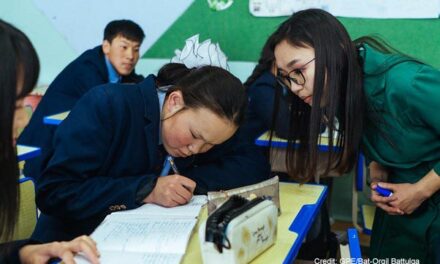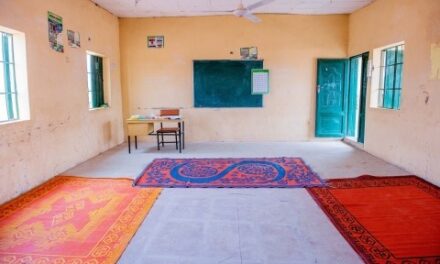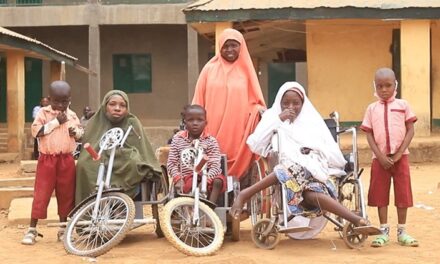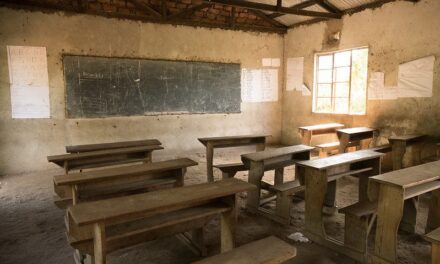This blog was written by Charlotte McClain-Nhlapo, Global Disability Advisor, World Bank and originally published on the Global Partnership for Education website on 11 May 2020.
What if the ongoing COVID-19 pandemic served as an opportunity to re-think how emergency education planning can be inclusive of children with disabilities? Isn’t this global crisis presenting a unique opportunity to rethink the need for accessible and inclusive education? Here are some of the ways we can move the Post COVID-19 agenda forward to make education truly disability inclusive.
As the COVID-19 pandemic continues to spread across the globe, schools are closed in 180 countries, leaving an estimated 1.5 billion children out of school. In addition, 80% of persons with disabilities live in developing countries where access to education is an ongoing challenge. The impact of COVID-19 is likely to be worse for people in lower socio-economic groups, and children with disabilities face an even greater risk of being left behind.
But we can make a difference. The pandemic serves as an opportunity to re-think how emergency education planning can be inclusive of children with disabilities, the steps the Inclusive Education Initiative is undertaking, and lessons drawn from the past.
Let’s start with a quick assessment of some of the challenges that children with disabilities face during this pandemic.
First, education provision is primarily done remotely
So far, mainstream responses for continued learning during the COVID-19 crisis have focused around strategies and solutions deployed during previous emergencies, such as the Ebola crisis of West Africa – where in Sierra Leone, for example, Humanity and Inclusion provided radios to families with children with disabilities to access learning programs. However, this crisis has appeared to rely heavily on education solutions reliant on computers, tablets and online learning portals, virtual lessons and radio/TV lessons. While this might be a workable option in some developed countries, these tools are not always accessible to learners with disabilities or those with complex learning needs, especially to poorer households and those in remote areas.
Second, remote lessons often lack accessibility features
The lack of accessibility features may exclude children with disabilities from these contingency programs. Increasingly, innovative EdTech solutions use computers, tablets, and mobile phones to provide online learning portals and virtual lessons. However, these tools often lack the basic and necessary accessibility features to make them usable for children with disabilities. And, even when the tools are made with the accessibility features, they require technology that is not readily available to many learners in low- and lower-middle-income countries. Even with the use of radio or TV, enhancing these platforms with accessibility features is critical to ensuring the continuity of instruction for all learners, particularly those with disabilities.
Third, limited internet access hinders learning even further
About 43% of learners globally do not have household internet, while many countries have low internet and broadband penetration, or unaffordable mobile data plans. This is further compounded in households with persons with disabilities who consistently have low rates of media access (with the exception of radio).
The importance of providing quality, effective, low-cost, low-tech and no-tech solutions, such as delivery of paper documents that takes into consideration safe handling and distribution should not be underestimated.
Fourth, there is a lack of additional support and care
Children with disabilities may require physical therapy, related care services, basic education support, assistive technology which is often only available at school. Similarly, access to school nutrition program may also be interrupted. Inclusive WASH facilities may not be available at home or in the community. In locked down jurisdictions, many personal assistants and necessary support workers are not deemed essential workers, resulting in disrupted services or no services at all. Relatedly, like many children, children with learning disabilities are sensitive to changes in routine and need teacher support to work independently.
Post COVID-19 presents an opportunity to make education truly disability inclusive
Clearly, the COVID-19 global crisis presents a unique opportunity to rethink the need for accessible and inclusive education. Some of the ways we can move this agenda forward include:
- Providing support to education systems to ensure that distance learning is accessible, teachers are trained and supported to remotely teach children with disabilities and ensuring that caregivers are supported as well.
- Providing the right mechanisms for inclusive wash, nutrition, mental health, and psychosocial support for children with disabilities and their families.
- Reallocating and targeting resources towards more inclusive health, social and educational services.
- Supporting the collection of disaggregate data by disability for emergency response and/or monitoring to help with tailored interventions, leading to improved support for children with disabilities in their learning environment.
A number of organizations are addressing some of these challenges, including UNICEF, who is providing tools for children with disabilities and ethnic and linguistic minorities that include sign language and multiple language subtitles in remote lessons.
Aligned with the World Bank’s 10 commitments to advance disability inclusive development, the Inclusive Education Initiative (IEI) has been working with partners to address the educational needs of children with disabilities at scale. The World Bank has also outlined some solutions for tackling inequity in education during and after COVID-19. The IEI is using its convening power to mobilize experts to assess emerging needs, practices, and solutions for children with disabilities by hosting an Expert Roundtable and launching a survey to understand if learners with disabilities and their families have access to the supports they need to continue learning while schools are closed. The survey is also available in French, Spanish and Arabic. The survey will inform recommendations for policy actions and practical solutions for emergency and recovery response in the forthcoming Issues Paper on Disability Inclusive Education for Children with Disabilities during COVID-19. The IEI Community of Practice is also serving as a platform to host the latest information on COVID-19 related impacts on disability-inclusive education.
As governments rapidly develop and implement alternative methods of distance learning, the World Bank is keen to leverage this opportunity to make learning more inclusive for children with disabilities now and in the future.

